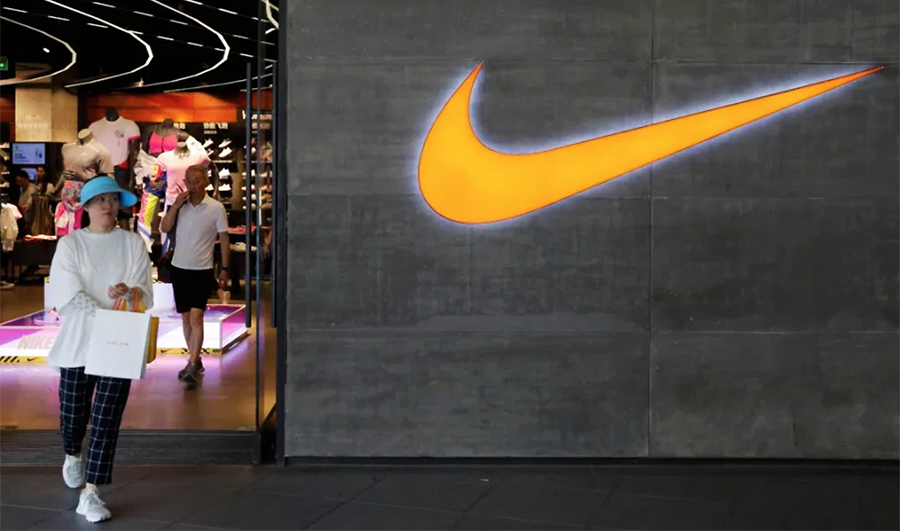<span style="color: #9e9e9e;">Morgan Stanley and Cowen both raised their price targets on Nike Inc. Both firms cited the benefits of the company’s digital transformation and potential margin improvement.
Kimberly Greenberger of Morgan Stanley raised her price target on Nike to $165 from $152 while maintaining her “Overweight” rating. Cowen analyst John Kernan lifted his target to $165 from $150 and also kept his “Outperform” rating.
“COVID-19 has allowed NKE to further accelerate its direct-to-consumer strategy making it one of the key apparel and footwear companies whose business model, total addressable market and margin profile, look better-positioned post-COVID-19,” Greenberger wrote in a note.
“While we expect ongoing, short-term COVID-19 headwinds in the remainder of NKE’s fiscal 2021 (ending May 21) until a vaccine is widely available, we emphasize NKE’s commitment to, and initial execution of, its Consumer Direct Acceleration strategy further solidifies our belief in its long-term revenue and margin expansion story.”
The analyst further wrote that despite Nike’s valuation nearing the upper end of its historical range and its robust year-to-date stock gain, “we see room for additional share price appreciation on positive EPS revisions on potential upside surprise to the upcoming quarter as well as against management’s seemingly conservative full year (May-21 year) guidance; NKE’s relevant exposure to activewear, one of the fastest-growing footwear and apparel categories, a trend which has only been accelerated by COVID-19 and should remain an ongoing tailwind; and NKE’s accelerated shift to DTC channel and, in particular, eCommerce, which should enhance its long-term revenue, margin and EPS growth.”
Greenberger noted that the recent global COVID-19 resurgence and European store closures pose risks to both the current quarter and fiscal year outlook but also cited a number of favorable trends including the benefits of a faster-than-expected recovery at wholesale from August to October, healthy gross margins and SG&A improvement in the third quarter across the sector and “continued record lean-channel inventories” across the athletic footwear and apparel space.
As for Cowen, Kernan said consensus earnings forecasts are conservative given its market data. Cowen’s Athlete Beat report, which tracks top sellers at Nike.com, Foot Locker.com and StockX.com, “indicates an increasing diversity across men’s and women’s,” wrote Kernan. He noted that women’s remains a sizeable under-indexed opportunity. He added, “ASPs (average selling prices) can continue to rise as the Air VaporMax 2020 FK MS, Air Max 270 React, VaporMax Flyknit 3, and Air Max 97 are all within top sellers.”
Other favorable data include Google Search trends for Nike averaging a gain of 3.2 percent for the company’s fiscal second quarter ended November 30 and a sequential acceleration from 1.1 percent from the fiscal first quarter on a trailing four-week average basis. ComScore digital trends in October 2020 reflected robust growth, up 20 percent year-over-year above September 2020. Finally, Kernan noted that Nike “appeared to be one of the least promotional among our coverage list for Black Friday/Cyber Monday promotions. All our contacts across the industry remain bullish on the product cycle into 2021.”
Cowen raised its Q221 EPS to 73 cents versus the 61 cents consensus and its FY21 EPS to $3.05 versus the $2.86 consensus. Nike will report results for the fiscal second quarter ended November 30 on December 18.
By region, Cowen expects the gains on a currency-neutral basis in the fiscal second quarter to be led by Greater China, estimated to increase 13 percent, followed by EMEA, 3 percent; North America, 2 percent; and APAC, flat.
Kernan also believes Nike merits a premium valuation given the company’s digital transformation that should power future sales and earnings growth. Wrote Kernan, “Consumer Direct Acceleration is a tailwind to margins and the financial model. Inventory optimization, personalization and customization are sales and margin opportunities RFID providing inventory visibility provides another improvement to better full-price selling and working capital management.”
Share of Nike closed Wednesday at $138.01, up 35 percent since beginning the year at $102.20. The stock has more than doubled since reaching a low of $60 on March 18 as the pandemic emerged.
Photo courtesy Nike, Wu Hong/Shutterstock
















